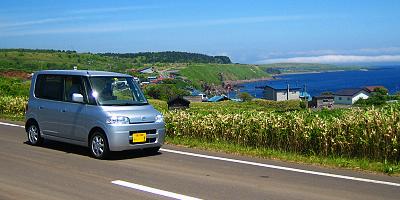

Driving in Japan |
||

Japan's large metropolitan areas around Tokyo, Osaka and Nagoya are served by highly efficient public transportation systems. Consequently, many residents do not own a car or even a driving license. Outside the big cities, however, public transportation tends to be inconvenient, and most people rely on a car. Roads and rules In Japan, cars drive on the left side of the road and have the driver's seat and steering wheel on the right. The legal minimum age for driving is 18 years. Road signs and rules follow international standards, and most signs on major roads are in Japanese and English. Drinking and driving is strictly prohibited.
International Driving Permits Foreigners can drive in Japan with a recognized international driving permit. Recognized international driving permits are valid for one year and must be obtained in your home country, usually through the national automobile association, before you leave for Japan. Japan recognizes only international driving permits, which are based on the Geneva Convention of 1949. A few countries, including Belgium, France, Germany and Switzerland, however, issue international driving permits, which are based on different conventions. The permits issued by those countries are not valid in Japan. Instead, holders of a French, German or Swiss driver's license can drive in Japan for up to one year with an official Japanese translation of their driving licenses to be obtained from the respective country's embassy or consulate in Japan. People from other countries, whose international driving permits are not recognized by Japan, must attain a Japanese driving license in order to drive in Japan. If you stay in Japan for more than one year, you should obtain a Japanese driving license (see details below), although it is theoretically possible to keep on getting new international driving permits each time your old one expires. Note, however, that in order for a new international driving permit to become valid in Japan, you will have to leave Japan for at least three months. |
© Copyright Handa-links.com All rights reserved.
|
